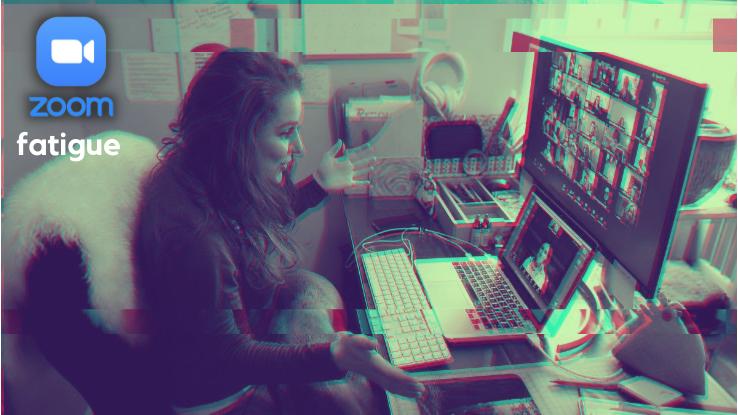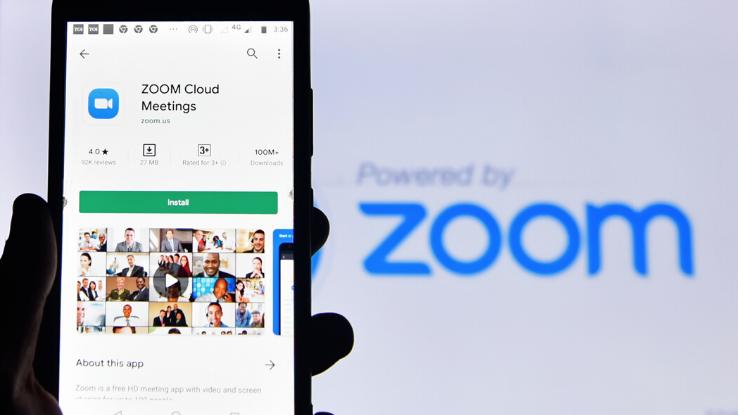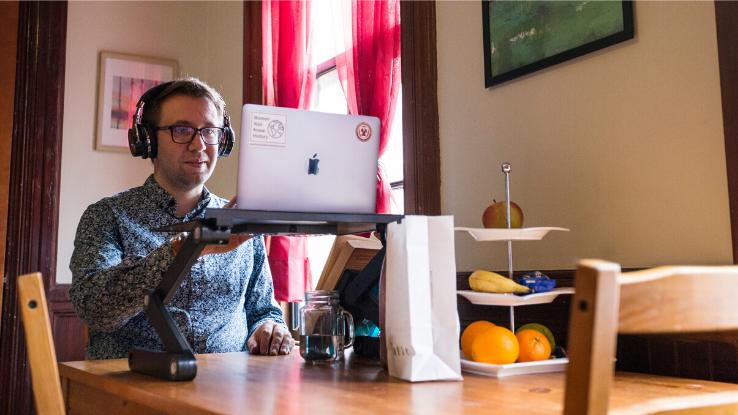How To Add Makeup On Zoom

Remember that Skype ringtone that would chime delightfully through your laptop's speakers when you lot tried to get someone on the line? A decade agone, that video chat service seemed destined to go the Google of its domain — so synonymous with video conferencing that it became a verb when yous wanted to "skype" someone. Yet, the video conferencing competition has become incredibly fierce.
While Skype seemed to have a horse in both races — professional person workplace chat services and social video chatting — other services emerged, carving out specific niches. For example, FaceTime became the go-to social video conversation service. Information technology's more firsthand, like shooting fish in a barrel to use, correct in the palm of your hand, and, best of all, designed to be quick — like a call.
Meanwhile, Zoom, which launched its software in 2013, aimed to become the platform for teleconferencing, telecommuting, and altitude learning. In the wake of increased shelter-in-place directives and work-from-home initiatives sparked by the COVID-nineteen pandemic, Zoom became a way to connect socially also.
If you, your friends, and your family are all using a platform for telecommuting, why not just utilize that same platform to virtually socialize too? Simply even before the COVID-19 pandemic hit, Zoom'due south ease-of-use and reliability resulted in a $1 billion valuation in 2017. The "unicorn" company joined the NASDAQ-100 stock index on April 30th, 2020. Perhaps more than impressively, Zoom has become the stand-in, brand-proper name verb that'southward synonymous with video conferencing.
Why Is Video Chatting So Draining?
While platforms like Zoom, which offers a complimentary version of its advice service, accept proven to exist invaluable resources during the novel coronavirus pandemic, at that place are some downsides to using this blazon of technology. Of course, the upsides — beingness able to work and learn remotely and safely from home; hosting events, like happy hours, birthday parties, religious gatherings, and even weddings; and connecting with friends and family unit face-to-face — outweigh any negatives. Still, information technology'south becoming more and more apparent that video chatting, fifty-fifty for just a few minutes a day nearly every twenty-four hour period of the calendar week, is exhausting.

Now more than always, we're all peckish connection — simple human interaction and socialization. It seems wrong to dread an upcoming Zoom conversation with buddies who live across the country, or thank you to the COVID-19 pandemic live just across town, but subsequently a long calendar week of telecommuting, sluggishness sets in nonetheless. Dubbed "Zoom fatigue," the tiredness that accompanies the end of the solar day feels similar both concrete and emotional exhaustion — even if yous were just attending regular piece of work meetings throughout the day. So, what gives?
According to Canadian publication CBC, chatting virtually can feel more tiring than an in-person take hold of-upwardly. "Users can feel like they're performing for the photographic camera more than than they would while meeting colleagues in person — especially when software continuously displays to a user their ain alive image, adding an element of cocky-awareness." When you lot consider the Hollywood Squares feeling of it all — a.k.a. Zoom's "gallery mode," which allows you lot to see all the chat's participants — it makes sense.
You never know when someone is looking at you, and then looking away, doodling in a notebook, scratching your nose — none of information technology feels like proper etiquette. In-person, conversations have lulls, flows and ebbs that allow participants to focus their attention on whoever is speaking or on the less static environs around them. With Zoom, information technology's all about staring into the photographic camera, desperately trying to brand center contact with every set of pixelated eyes. For folks with social anxiety, trying to be heard or interject over a Zoom call can feel even more daunting due to that looming, silent audience.
To make matters more trying, sometimes staying engaged takes so much energy that a Zoom call becomes two primary speakers going back and forth while anybody else listens on, microphones muted. We've all been there, nodding forth and wondering if anyone can tell we're nodding at all. Of grade, there's more to looking like an active listener via a video conversation than eye contact and facing forrard. Janine Hubbard, a psychologist at St. John's, told CBC in an interview virtually another factor that leads to fatigue. "We're doing exaggerated non-verbal cues, equally opposed to much more naturalistic, relaxed ones that nosotros would ordinarily do."
We tin't really read small gestures or body language over a video chat. If someone is fidgeting nervously, that'south less apparent. You too can't give the verbal and nonverbal cues yous commonly would if you want to interject. Think of it like acting on phase — where even the last row of the audition needs to encounter your emotion — versus acting for a movie, when you have all the close-ups you demand and distance doesn't matter every bit much. According to the Wall Street Journal'southward findings, even that "millisecond delay" between activeness and reaction can touch video chatters.
Perhaps one of the greatest challenges of Zoom is all that multitasking. In fact, you lot might non even perceive information technology as such, only it's articulate that video conferencing is a balancing human action. Andrew Franklin, an banana professor of cyberpsychology at Virginia's Norfolk State University, explained to National Geographic why the multitasking factor, or every bit psychologists call it, "continuous partial attention," plays such a huge function in Zoom fatigue. "Nosotros're engaged in numerous activities merely never fully devoting ourselves to focus on anything in particular," Franklin notes.

So, how can we combat this fatigue? Outset, information technology's of import to limit the number of meetings — and their running time — on a daily basis. Keep that in mind when chatting socially with friends for happy hour or over the weekend. Just because someone is feeling too drained to video chat, that doesn't hateful they don't want to almost hang.
Another like shooting fish in a barrel tactic? Try shifting your calls to audio-only. If you're on Zoom, agree to go along the video off unless visuals are absolutely necessary, or at least ensure your workplace (or friend group) is okay with particularly fatigued individuals opting out of the video portion once in a while. Of course, if none of these Zoom-related tips help sharpen your focus or reduce your fatigue, there'south nada wrong with picking upward the telephone and calling your coworkers, friends, and family the sometime-fashioned way on occasion.
The CDC regularly updates its condom guidelines for vaccinated and unvaccinated individuals. If y'all wish to meet upwards with your loved ones in person, you're strongly encouraged to carefully read these guidelines. Virtual vacations are also valid and viable ways to combat Zoom fatigue.
How To Add Makeup On Zoom,
Source: https://www.ask.com/culture/ask-answers-what-is-zoom-fatigue?utm_content=params%3Ao%3D740004%26ad%3DdirN%26qo%3DserpIndex
Posted by: grillomurds1936.blogspot.com


0 Response to "How To Add Makeup On Zoom"
Post a Comment